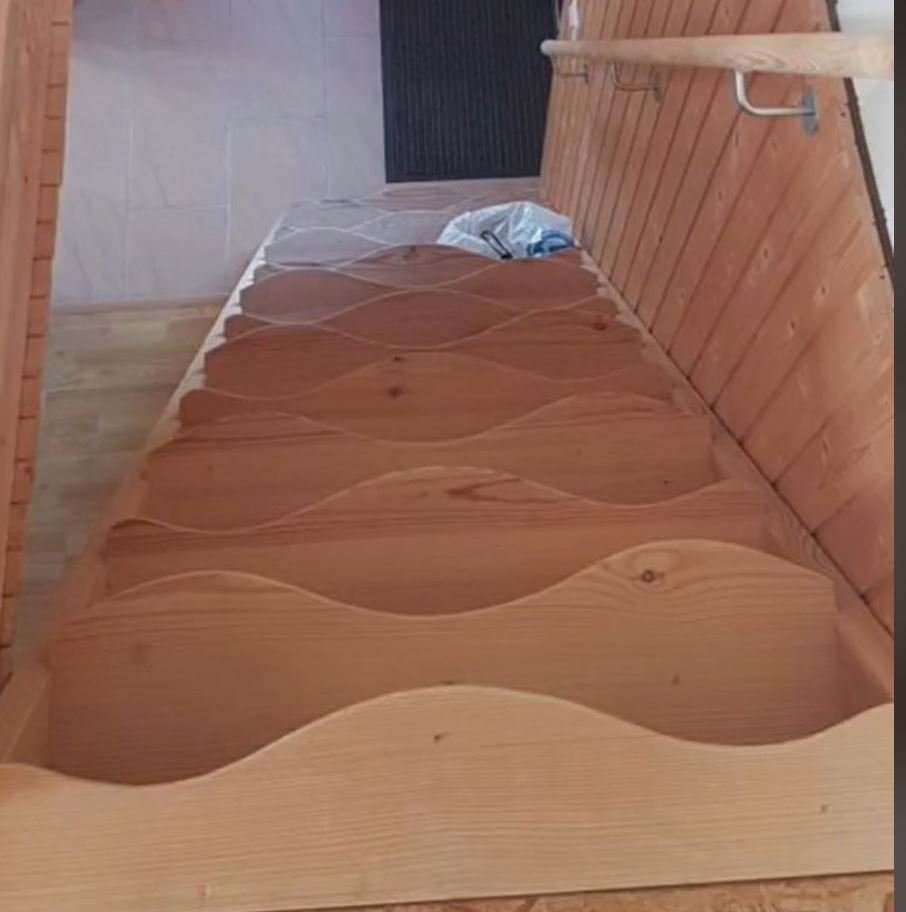The world’s most famous blue man, Paul Karason, also dubbed Papa Smurf, was born as a fair-skinned, freckled boy with ginger hair. In the 2000s, he became an internet sensation and made many TV appearances, openly talking about his condition. Let’s find out together why Karason turned blue and how he became a cautionary tale.

Paul Karason had a skin condition that made his skin flake, as well as acid reflux and arthritis. Doing his own research in order to improve these ailments, he found out about a solution of silver in water, also known as colloidal silver.
Colloidal silver was widely used as an antibiotic back before penicillin was invented in the 1930s. It was banned in 1999 in over-the-counter medications after scientists found that it can severely damage internal organs.

The late Paul Karason and his wife, Joanne
Karason drank what he believed was a miracle cure for over 10 years. Moreover, he even began to apply a silver preparation directly to his skin; he claimed his acid reflux and arthritis just went away. “I had arthritis in my shoulders so bad I couldn’t pull a T-shirt off. And the next thing I knew, it was just gone,” he shared.
Due to the silver accumulation in his skin, he started to turn blue and suffered from a permanent and rare condition called argyria. Only when Karason met an old friend who asked him, “What have you done to yourself?” did he begin to realize he’d become blue.

Karason claimed his blue skin had many advantages — he never got sunburns or had to wear sunglasses. There were some side effects he did not appreciate, however, such as folks “being less than polite” to him. Moreover, Karason confessed he couldn’t get a job because of employers’ resistance to hiring “people that are blue or that are noticeably different.”
Sadly, Paul Karason passed away in 2013 when he was 62 years old due to heart complications.
Papa Smurf’s story serves as a valuable lesson about the importance of being careful when it comes to at-home remedies. While it’s natural to want to find easy solutions to health problems, it’s important to be aware that such remedies can sometimes pose serious risks. It’s always better to consult a doctor and follow their advice for a safe and effective treatment.
Preview photo credit Inside Edition / YouTube
What Are Witches’ Stairs? A Simple Explanation of This Strange Home Design
Witches’ stairs are a strange but interesting design feature that became popular on TikTok a couple of years ago. Even though they have an unusual history, their name doesn’t really have to do with superstition. Instead, these stairs are a clever design choice. When made and installed correctly, they can be both useful and nice to look at!
Witches’ Stairs aren’t what they Appear.

While the stories about witches’ stairs might sound more interesting, they actually have a very practical purpose. They are really useful in homes with little space, like attics, lofts, and tiny houses. Witches’ stairs are designed to save space while still allowing you to go from one floor to another. Architects often call them “alternate tread stairs.”
How Witches’ Stairs Function

Photo Credit: itsthatrealestatechick | TikTok
Witches’ stairs are designed to save space in two ways. First, each step is only half as wide as regular steps, and the steps are staggered. This makes the staircase narrower than a traditional one. These smaller stairs can also be used for extra storage, like for books or displaying items. According to Scott Schuttner, who wrote “Basic Stairbuilding,” the distance between the steps on one side of an alternating-tread stair is twice the height of the rise, which gives you more space on the steps and makes them safer.
Besides being practical, witches’ stairs meet building codes and safety standards in the U.S. A standard staircase is usually 3 feet wide, while a residential witches’ staircase is typically between 27 and 30 inches wide.
Real Origins

Photo Credit: itsthatrealestatechick | TikTok
In 1985, a businessman named J.M. Lapeyre created a metal version of witches’ stairs. He thought these stairs could be a safe alternative to ladders in commercial and warehouse settings, especially in tight spaces where ladders might not be safe. This design is also used on commercial ships and oil rigs, and it can be called ship stairs or ship ladders, in addition to witches’ stairs and alternate tread stairs.
Misconception

Photo Credit: itsthatrealestatechick | TikTok
When videos of witches’ stairs first appeared on TikTok in 2021, they were linked to an urban legend. According to this legend, these staircases were built in 17th-century Massachusetts to keep witches away during the Salem witch trials because “witches can’t climb up them.” This idea has been proven false, but another rumor suggests that Thomas Jefferson came up with the design. Because of this, witches’ stairs are sometimes called Jeffersonian or Jefferson stairs. However, an original version of the design was also mentioned in a book called “Monckton’s One Plane Method Of Hand Railing and Stair Building,” published in 1888.
Debunking the Myth

Photo Credit: conspiracy___time | TikTok
The exact origins of witches’ stairs are a bit unclear, but one thing is clear: there’s no historical evidence that they were designed to keep witches away. Historian Robin Briggs has studied many historical sources and found no mention of stairs that could disable witches. Interestingly, some people with these unique staircases also buried “witch bottles” or included dead cats in their homes for protection against witchcraft, but Briggs calls this idea “pure disinformation.” He notes that the closest belief was that putting a broom over the door would trap a witch inside.
While it’s fun to think about myths and legends, it’s also interesting to know the real history of witches’ stairs. Regardless, they offer a unique and decorative alternative to regular staircases, adding a fun and quirky touch to home design.



Leave a Reply